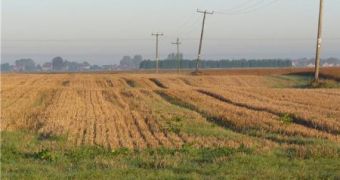A recently discovered fossilized English landscape has been the subject of a new research led by a team of scientists from the University of Leicester, published in the Proceedings of the Geologists’ Association.
The area in question is called the English Fenlands, and it stretched across Cambridgeshire, Lincolnshire and north Norfolk, thousands of years ago, when it was a huge coastal swamp.
This portion of earth between sea and land, populated by Bronze Age humans that hunted and fished it these prolific waters, is now providing information on how this ancient environment worked.
In the last two hundred years, the area has been radically transformed, drained, ploughed and turned into the most productive farmland in England.
The ground sank down to four meters below sea level, wasting away the thick surface layer of peat and revealing the hidden treasures of a 5,000 year-old “fossilized” landscape.
Dinah Smith of the Geology Department of the University of Leicester and her colleagues carried out a study focusing on the fossil rivers and creeks, or “roddons” as they are called locally.
The discoveries they made include ancient human constructions like those at Flag Fen and also perfect fossils of ancient watercourses.
These “roddons” should allow researchers to better understand the way that this huge ancient landscape functioned, as the strata within them are full of small fragile fossils.
These sediments hold lots of clues concerning the environment at that time and the fossilized rivers and creeks themselves seem to have had a sudden and maybe catastrophic end, filled with sediments from the sea.
Scientists say that as generations of “roddons” kept appearing and disappearing, they transformed the entire landscape around them, reports Alpha Galileo.
Study leader Dinah Smith said that “the Fenland roddons provide an eloquent signal of just how precarious environmental conditions are, at the edge of the sea.
“As climate and sea level are now set to change, it is knowledge of phenomena like these that will help us understand the world of the future.”

 14 DAY TRIAL //
14 DAY TRIAL //